- Home
- J. D. Robb
Abandoned in Death Page 4
Abandoned in Death Read online
Page 4
An easy mark for someone with a plan in place.
The questions remained: Why the plan? Why her?
She pushed through one of the doors to Morris’s domain and saw he had his sealed hands inside the chest cavity of her victim.
Music murmured, something with a lot of low-note brass and a woman singing about love lost.
He looked up, smiled. “An early start on the day for you, and a very early end for her.”
He wore a blue suit, a bold color that told her his mood hit high. He’d matched it with a shirt the color of ripe pears and a tie that blended the two tones in subtle swirls. He’d braided his long, dark hair in some complicated pattern that formed a coil at the back of his neck.
He weighed an internal organ with easy efficiency.
Eve moved closer, looked down on the body, naked and open now.
“I think her end, in a lot of ways, happened the night of May twenty-eighth.”
“The lacerations and contusions on the wrist and ankle. Some would meet that date, some are more recent. Shackled, and the cuffs would be an inch and three-quarters wide. Some other minor contusions, as you can see—the other ankle, the knees, elbows.”
“The other ankle, from banging into the shackle.”
“Yes. And the others, minor, as I said. Not consistent with violence. He didn’t beat her, and he didn’t rape her. There’s no sign of sexual assault, or consensual sex, not recent.”
Morris walked over to a sink to rinse the blood off his hands. “She’s very clean. Her hair, her body, recently and thoroughly washed—her hair styled. The makeup, as you can see, very carefully applied.”
“I think he had an image, and she was like a doll, you know?”
With a nod, Morris walked to his mini-friggie, took out a tube of Pepsi for both of them. “I do, and had the same thought. She was a form, and he used that form to create the image he wanted. Both the makeup and hairstyle are dated, as was the clothing.”
“Were they?”
Now he grinned as he opened the tubes, handed her one. “For someone who dresses so well, you have a sketchy knowledge of fashion and its history.”
“Roarke’s always putting stuff in my closet. How dated?”
“Turn of the century, I’d guess, or the first few years of it. But it shouldn’t be difficult to get a solid time frame.”
“Where’d he get them? Did he have them already, and she fit the build, the size?” Frowning, Eve circled the body. “Maybe. Mostly fit, because the shoes were too small.”
“Correct there. She’d have been closer to a size eight than the seven and a half of the shoes he put on her.”
“Tougher to gauge a shoe size than clothes, I’d think. Jeans were a little tight. You can see where they dug in.”
“Again slightly off her size.”
“So he already had them, or just needed her to be the size he wanted.”
“Possibly. I can tell you that other than being dead, she was healthy. No sign of illegals abuse, alcohol abuse. Her last meal, consumed about five hours before TOD, consisted of a few ounces of grilled chicken, some brown rice and peas.”
“So he kept her fed.”
“And hydrated. She drank tea.”
“No signs of torture.”
“None, but I’ve sent the contents to the lab, and we’ll have a tox report shortly, I hope. The tat, the belly piercings, the third ear and the ear cartilage piercings were done within the last seventy-two hours. She was alive for those. But her nails? This is a fresh mani-pedi. These nails were recently shaped. Postmortem.”
Maybe somebody who worked on the dead in funeral and memorial venues. Somebody who fixed them up like they were just sleeping for the mourners.
Maybe.
“Bad Mommy—that’s what he wrote, left on her.”
“Yes, I saw the recording.”
“She doesn’t look like the standard image of Mommy, right?”
“They come in all shapes and sizes.”
Eve drank absently, gave a flickering thought to her own. Far from standard. “I guess so. If the victim was a surrogate, we’d be looking for someone about this build, likely this coloring, with the tat, the piercings, who was in this general age range—or looked like it—around the turn of the century.”
She circled the other way.
“Or he just wanted to play with a doll, and has an old-fashioned sense of style.”
She stopped. “The neck wound and repair.”
“No hesitation marks. One quick stroke. Smooth, sharp blade. About four inches long. I’d look for a folding knife. A good, sharp pocketknife.”
Now her eyes narrowed. “A pocketknife.”
“Smooth, short, straight blade. No jags, no angles. He faced her to kill her. A left to right slice, so right-handed.”
Nodding, she ran it through her head. “Makes sense. Why would he have a knife—a sharp—sitting around anywhere near a woman he’s holding against her will? Pocketknife.”
She pulled her own out of her pocket, hit the button to flip out the blade. “But you’re carrying it, you’re done with her, just take it out. It’s more of the moment. She does or says something, hasn’t done or said something. He’s pissed, and swipe. Done.”
“A single slice, no hesitation marks, so yes, it could be in the moment. The stitching, now, is precise, like the rest of his work. Careful and meticulous. I sent the thread to the lab. It may be upholstery thread—stronger and thicker than what you’d use to sew on a button, for instance. And the needle would be the same, thicker, likely longer than a standard sewing needle. More like what I’ll use to close this Y-cut.”
“Not medical-grade thread, but maybe some medical skills?”
“Or sewing skills. Or—sorry for the ors,” he said with a smile. “Someone taking their time.”
“Yeah, or that or that. Or he’s just obsessively precise. No sex, no violence, no torture. What did he want from her? What did he want with her? Maybe the obvious. A mommy.”
Morris laid a hand on the victim’s shoulder. “Now she’ll never get the chance to decide if she wants to be one.”
“No, she won’t. She has family, and a cohab. They’ll want to see her.”
“I’ll contact them when she’s ready.”
“Okay. Thanks for the tube.”
“Anytime. Dallas? She was left at the playground near the house—the house our friends will live in.”
“Yeah. I’m on that.”
“I’m sure you are. We look after strangers who become ours every day. And we look after family. If Mavis needs anything, let her know I’ll be there.”
“I will. She doesn’t fit the image. She’s smaller, and Christ knows what color her hair will be on any given day. And she’s pregnant. But the pregnant thing makes her a mommy.”
“He doesn’t want someone else’s mommy though, does he?”
“I don’t think so. Still, I’m on it.”
Or would be, she told herself as she started out. She had to get to Central, set up her board and book. Think. She had questions for Mira.
She considered going by the lab, lighting a fire under Berenski, maybe giving Harvo a nudge.
Too soon, she admitted. She’d give them twenty-four hours, then she’d light fires and give nudges.
As she pulled into Central, Peabody tagged her.
“Mira can squeeze you in now if you’re on your way back.”
“I am back.”
“She’s got a short window now, otherwise—”
“I’m taking now.” Eve zipped into her slot. “I’ll run it down for her, send her the report later.”
“I’ll tell her admin you’re on your way. Hey, ask about the baby.”
“What baby?”
“The admin’s new grandbaby. Make nice,” Peabody said before Eve could object or complain, “and she may make nice next time you need a window with Mira.”
“Stupid,” Eve muttered as she crossed to the elevators. “Babies don’t have a
nything to do with homicide and profiling. Unless they do, and they don’t on this.”
“Just try it. It won’t hurt much.”
“So you say.” Eve cut her off and jumped in the elevator.
Since she figured now meant now, she stayed on even when cops and techs and who the hell knew squeezed on.
On Mira’s floor, she shouldered her way through the pack and out. Breathed in clear air as she moved quickly to Mira’s outer office, and the dragon at the gates.
Mira’s admin sat imperiously as always at her desk, ear-link on as she worked on whatever the hell she worked on.
She shifted her icy gaze up, pinned Eve with it.
“Dr. Mira has only twenty minutes.”
“I’ll make it quick.” She started to go straight in, then mentally rolled her eyes, ground her teeth. “Anyway, congratulations on the grandchild thing.”
The ice melted into a kind of dreamy mist. “Thank you.” She lifted a framed photo from her desk. “Isn’t she gorgeous?”
Eve saw what appeared to be the result of a strange mating of a trout and a very angry, possibly constipated old man. She said, “Wow.”
“So precious. Twenty minutes,” she repeated, but the misty dreamy remained.
Eve stepped in where Mira sat behind her own desk, keyboarding. She held up a finger. “I need one more minute to finish answering this. Have a seat.”
Because she wasn’t ready to sit, Eve just stood, studying the shelves that held Mira’s memorabilia, awards, photos. More babies and kids, but none with that fishy newborn look.
“Sorry,” Mira said after a moment. “It’s already a day.”
“No problem, and I appreciate you fitting me in.”
“You wouldn’t ask if you didn’t need.” Rising, Mira walked to her AutoChef on her high, skinny heels the color of perfectly cooked salmon.
They matched her suit with its knee-skimming skirt that showed off excellent legs. She wore a triple chain with pale blue stones that exactly matched the buttons of the suit jacket.
It never failed to astonish and baffle Eve that anyone managed that coordination, especially as consistently as Charlotte Mira.
She expected to smell the lightly floral tea Mira preferred, and instead scented good, strong coffee.
“Coffee.” Eve almost sighed it.
“I need it.” With a smile, Mira handed Eve a cup before she took a seat in one of her blue scoop chairs. “As I said, a day. And you’re having one yourself. A body, Peabody said, left in the playground near the new house. Have you spoken with Mavis?”
“Not yet. It’s on the list.”
“Which is long.”
“It is. I’m just back from the field so haven’t written it up yet.”
“So you’ll tell me.”
“Female, Caucasian, twenty-six, a bartender walking the few blocks home after closing.”
Still standing, she ran through it all as the department’s top profiler listened.
She pulled out her ’link, called up the crime scene record to show Mira the body, the message left.
“It looks like it was written with a crayon.”
“The lab’ll confirm.”
Nodding, Mira studied the images.
“The look? The way he dressed her, styled her? It reminds me of my mother’s sister—my aunt—back when I was a child. Photos of her from that time frame. She was, according to my mother, a bit of a wild child.”
“Morris said the clothes were outdated.”
“Yes. To my eye as well.”
“You’d be two who’d know.”
With a smile, Mira brushed back a wave of her mink-colored hair. “It’s a … hard look, again to my eye. The makeup, the hairstyle. Hard rather than edgy or overtly sexy. Certainly not traditionally or classically maternal. At the same time, it’s all so very exacting. A lot of care went into creating this look. It mattered. She—the woman he, or she, sought to re-create—mattered. There’s as much love here as hate. Maybe more.”
“He kept her for ten days, had to have chosen her, known her basic routine. All that takes time and care.”
“It does,” Mira agreed. “She fit the outline, either physically or by lifestyle. She worked in a bar, perhaps the one she represented worked in a bar. Or worked nights. Certainly something about the victim sparked this need to take her, keep her, try to make her into the original.”
“The mother.”
“Almost certainly the killer’s mother or mother figure.”
Mira sat back again, sipping her coffee as she chose her words.
“No sexual aggression or rape, no physical violence beyond the abduction and the killing blow. I agree she must have been drugged when the tattoo and the piercings were done—and these markings will reflect the original. A woman, most likely, at least in her upper seventies—to fit the fashion he chose, potentially older. She’s either dead or has broken ties with the killer. Assuming mother, the killer would be at least late fifties. He shows control, patience, organized behavior, maturity.
“If this is his first, and you’ll check for like crimes, there’s a trigger. A betrayal by the mother figure, her death, her abandonment, remarriage. Something that drove him to need to replace and re-create.”
“She didn’t measure up—the victim. Or he killed her to punish the original because she did, in his mind, measure up. Why sew up the killing wound and hide it under the ribbon?”
“It’s all so tidy,” Mira added. “A hard look, but so clean, so perfect. There may be remorse here, but it strikes me as more likely leaving an open wound is incomplete, untidy, and even the stitches would spoil the image. He’s angry with her—she’s bad—but she still represents Mother. Precise, controlled, a perfectionist with the maturity to plan it out, but the lettering on the sign?”
“Like a kid’s. Not precise.”
“The child in him—the angry child—lashed out. The mature tidied it all up. He’s psychotic, with a mother obsession that drove him to—in his mind—matricide.”
“He’ll kill her again.”
“Almost certainly. The love/hate, the rage/need, all must be met. The killer’s a man or woman likely at least fifty-five, and I think more likely at least sixty, and his mother figure was Caucasian, blond at the time he’s re-creating, with a build that closely matches the victim’s. She liked to party—or he sees her that way, he remembers her, from childhood, that way. He wants her back as much as he wants to destroy her. He didn’t give her a wedding ring.”
“People don’t always go for those.”
“More so, much more so, in the era I believe he’s re-creating. Unmarried woman, widowed or divorced. The father isn’t important to him. It’s only her. It’s only them. He won’t have siblings. Or had no relationship with them, has none now. The killer isn’t in a relationship, lives alone. He may have a skilled job. If indeed the killer is male, he’s asexual or impotent.”
“I’m leaning male.”
Mira set aside her coffee, recrossed her legs. “Why?”
“From what I’ve seen, mothers and daughters have—generally—a different sort of dynamic than mothers and sons. A guy’s more likely, it seems to me, to deify or demonize the mother figure. I feel like if the killer was the daughter—or saw herself that way—there would have been some violence on the vic. You know, ‘You ruined my life, you bitch.’ And there wouldn’t’ve been so much effort put in to make her look, you know, pretty.”
Mira sat back. “I completely agree. I wouldn’t rule out the female, and there I’d look for someone the people who think they know her describe as meek and unassuming, quiet, diligent.
“In either case, this is someone scarred in childhood who’s carried those scars, and—again if this is the first kill—recently experienced a trigger.”
“Okay.” Talking it through gave Eve a picture. Not clear and exact, not yet, but a picture. “I’ll get you the report, the record, the lab results as they come in.”
“It’s fascinating.
Tragic for all involved, but fascinating. The power of motherhood, for good or ill.” Mira’s soft blue eyes held on Eve’s. “You understand that.”
“Yeah. The last thing I’d want to do is re-create mine.” She started to push to her feet, then stopped. “She didn’t abuse the kid—the killer. If she had, he’d have paid her back. There’d be signs of payback. Physical abuse or sexual abuse.”
“Abuse, if it applies, may have been emotional.”
“Yeah, there’s that.” Now she stood. “I appreciate the time.”
“I’m glad I had it. It is fascinating, Eve. You’ll search for more missing women?”
“On the list,” she said.
She took the glides up for the breathing room and thinking time. She needed to dive into every detail of the victim’s appearance, every step her killer had taken to create her.
Missing persons, female, between twenty and thirty to be safe, she considered. In the last month, to fully cover it. Start with a search using the victim’s basic physicality.
Finding the “mother,” the original, had to be one of the top priorities. She had some ideas how to start on it, but it would take time.
If the killer abducted another surrogate, time narrowed.
And on a personal level, she needed to talk to Mavis.
She smelled the brownies the minute she swung into Homicide.
And there in her bullpen, her damn good cops—including her partner—scarfed down brownies as Nadine Furst, bestselling writer, Oscar-winning screenwriter, and, more relevant, award-winning on-air reporter for Channel Seventy-Five, leaned her well-toned butt on Peabody’s desk.
“I assume the population of New York, including all tourists and visitors, is alive and well.”
Jenkinson, her senior detective, brushed a crumb from his atomic-yellow tie. Eve found herself surprised one of the grinning green frogs hopping over it hadn’t flicked out a tongue to capture it first.
“Just a real quick break, boss. They’re double fudge.”
“Break’s over. Nadine, I don’t have time for you. Peabody, my office.”
Peabody hustled after her, but Eve heard the bright click of Nadine’s skyscraper heels in pursuit.
“Busy,” Eve snapped without looking around. “Take off before I charge you with bribing police officers.”

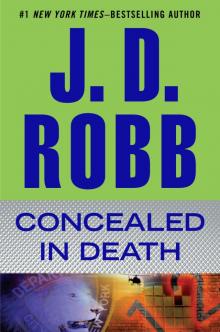 Concealed in Death
Concealed in Death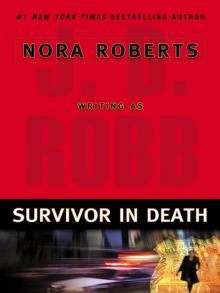 Survivor in Death
Survivor in Death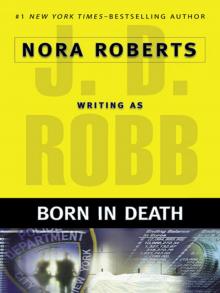 Born in Death
Born in Death Ceremony in Death
Ceremony in Death Indulgence in Death
Indulgence in Death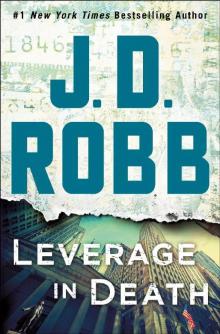 Leverage in Death
Leverage in Death Devoted in Death
Devoted in Death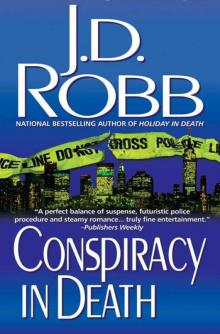 Conspiracy in Death
Conspiracy in Death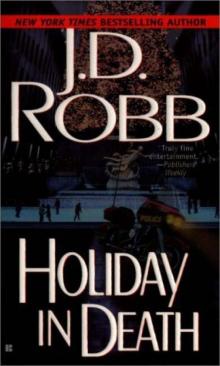 Holiday in Death
Holiday in Death The Unquiet
The Unquiet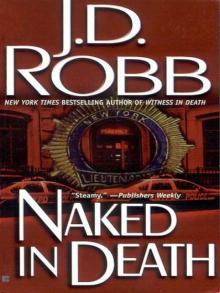 Naked in Death
Naked in Death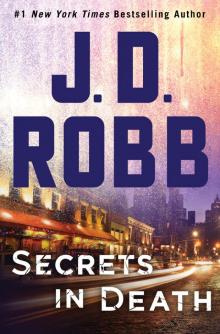 Secrets in Death
Secrets in Death Seduction in Death
Seduction in Death Strangers in Death
Strangers in Death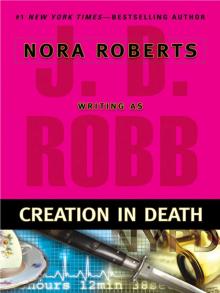 Creation in Death
Creation in Death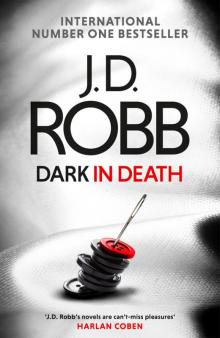 Dark in Death
Dark in Death Possession in Death
Possession in Death Visions in Death
Visions in Death Midnight in Death
Midnight in Death Innocent in Death
Innocent in Death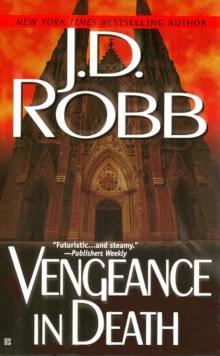 Vengeance in Death
Vengeance in Death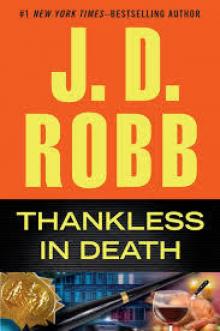 Thankless in Death
Thankless in Death Glory in Death
Glory in Death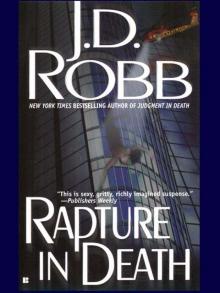 Rapture in Death
Rapture in Death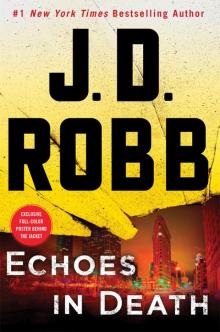 Echoes in Death
Echoes in Death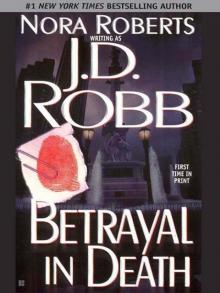 Betrayal in Death
Betrayal in Death Celebrity in Death
Celebrity in Death Immortal in Death
Immortal in Death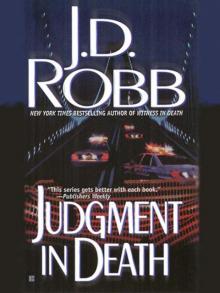 Judgment in Death
Judgment in Death Ritual in Death
Ritual in Death Portrait in Death
Portrait in Death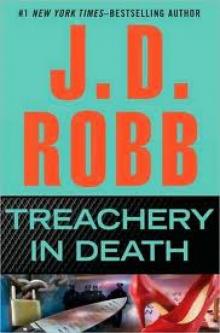 Treachery in Death
Treachery in Death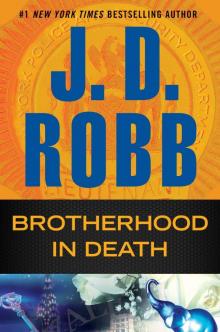 Brotherhood in Death
Brotherhood in Death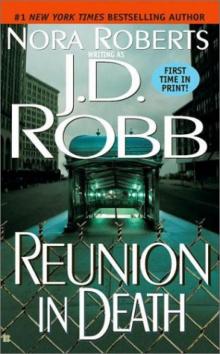 Reunion in Death
Reunion in Death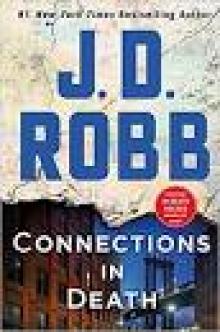 Connections in Death: An Eve Dallas Novel
Connections in Death: An Eve Dallas Novel Imitation in Death
Imitation in Death New York to Dallas
New York to Dallas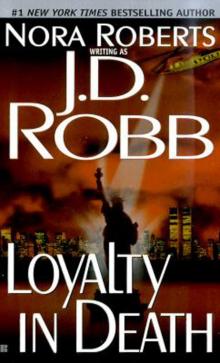 Loyalty in Death
Loyalty in Death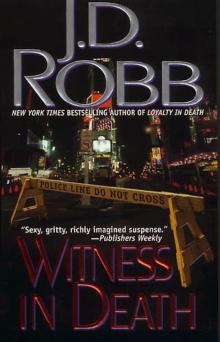 Witness in Death
Witness in Death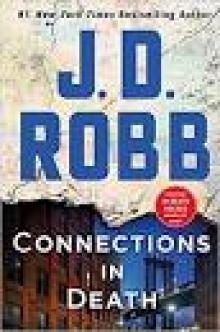 Connections in Death
Connections in Death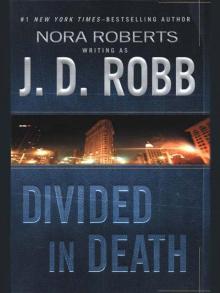 Divided in Death
Divided in Death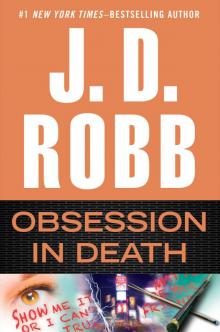 Obsession in Death
Obsession in Death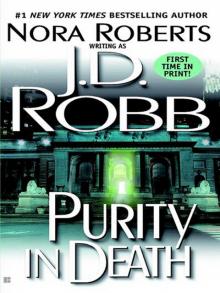 Purity in Death
Purity in Death Festive in Death
Festive in Death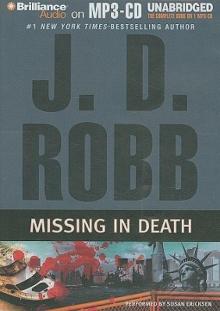 Missing in Death
Missing in Death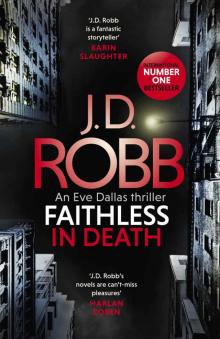 Faithless in Death: An Eve Dallas Thriller (Book 52)
Faithless in Death: An Eve Dallas Thriller (Book 52)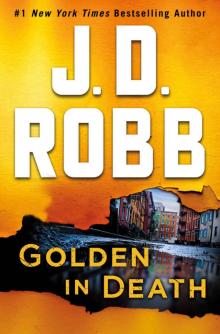 Golden in Death
Golden in Death The In Death Christmas Collection
The In Death Christmas Collection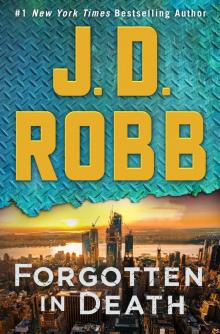 Forgotten in Death
Forgotten in Death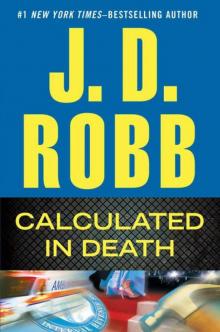 Calculated in Death
Calculated in Death Salvation in Death
Salvation in Death Interlude in Death
Interlude in Death Haunted in Death
Haunted in Death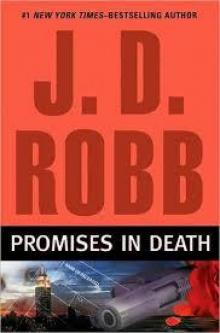 Promises in Death
Promises in Death In Death 07.5 - Midnight in Death
In Death 07.5 - Midnight in Death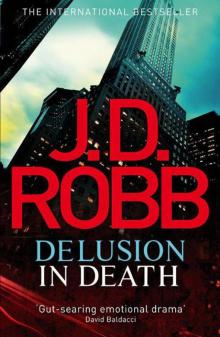 44 Delusion in Death
44 Delusion in Death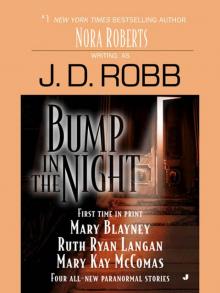 Bump in the Night
Bump in the Night The In Death Collection, Books 16-20
The In Death Collection, Books 16-20![[In Death 17] - Imitation in Death Read online](http://i1.bookreadfree.com/i/03/20/in_death_17_-_imitation_in_death_preview.jpg) [In Death 17] - Imitation in Death
[In Death 17] - Imitation in Death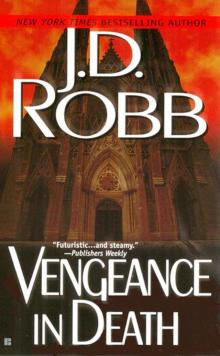 In Death 06 - Vengeance in Death
In Death 06 - Vengeance in Death Dead Of Night
Dead Of Night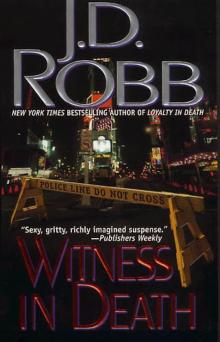 In Death 10 - Witness in Death
In Death 10 - Witness in Death![[In Death 16] - Portrait in Death Read online](http://i1.bookreadfree.com/i1/03/27/in_death_16_-_portrait_in_death_preview.jpg) [In Death 16] - Portrait in Death
[In Death 16] - Portrait in Death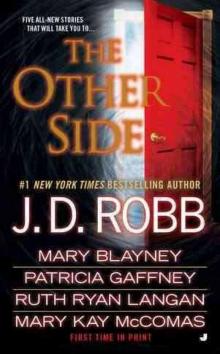 Possession in Death edahr-39
Possession in Death edahr-39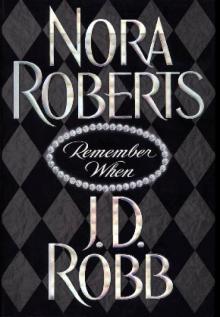 Remember When edahr-20
Remember When edahr-20 Big Jack
Big Jack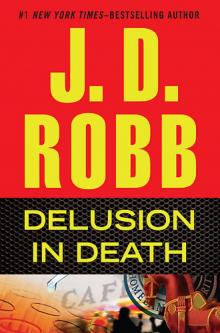 Delusion in Death edahr-44
Delusion in Death edahr-44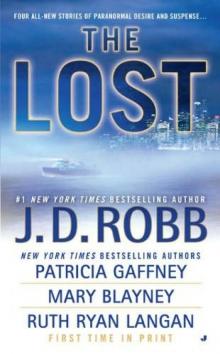 Missing in Death edahr-36
Missing in Death edahr-36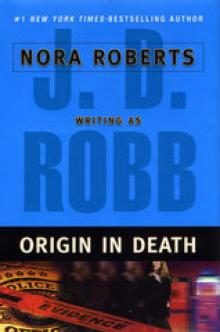 Origin in Death edahr-24
Origin in Death edahr-24![[In Death 18] - Divided in Death Read online](http://i1.bookreadfree.com/i1/04/03/in_death_18_-_divided_in_death_preview.jpg) [In Death 18] - Divided in Death
[In Death 18] - Divided in Death The Lost
The Lost![[In Death 05] - Ceremony in Death Read online](http://i1.bookreadfree.com/i1/04/01/in_death_05_-_ceremony_in_death_preview.jpg) [In Death 05] - Ceremony in Death
[In Death 05] - Ceremony in Death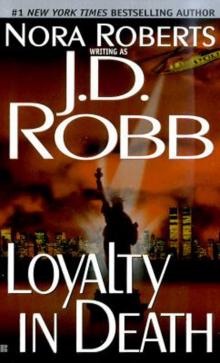 In Death 09 - Loyalty in Death
In Death 09 - Loyalty in Death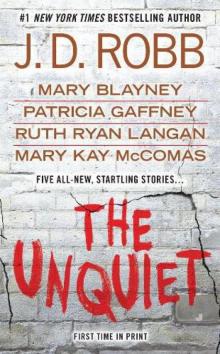 Chaos in Death edahr-42
Chaos in Death edahr-42 In Death 12.5 - Interlude in Death
In Death 12.5 - Interlude in Death![In Death [47] Leverage in Death Read online](http://i1.bookreadfree.com/i1/04/01/in_death_47_leverage_in_death_preview.jpg) In Death [47] Leverage in Death
In Death [47] Leverage in Death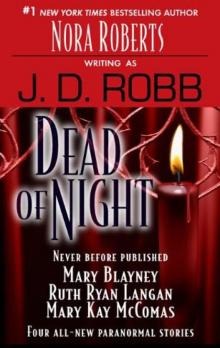 In Death - 24.50 - Dead of Night
In Death - 24.50 - Dead of Night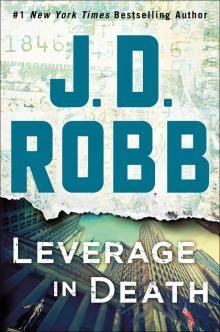 Leverage in Death--An Eve Dallas Novel
Leverage in Death--An Eve Dallas Novel![[In Death 24] - Innocent in Death Read online](http://i1.bookreadfree.com/i1/04/05/in_death_24_-_innocent_in_death_preview.jpg) [In Death 24] - Innocent in Death
[In Death 24] - Innocent in Death![[In Death 15] - Purity in Death Read online](http://i1.bookreadfree.com/i1/04/05/in_death_15_-_purity_in_death_preview.jpg) [In Death 15] - Purity in Death
[In Death 15] - Purity in Death The In Death Collection, Books 26-29
The In Death Collection, Books 26-29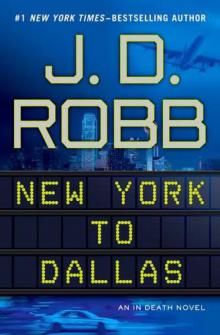 New York to Dallas edahr-41
New York to Dallas edahr-41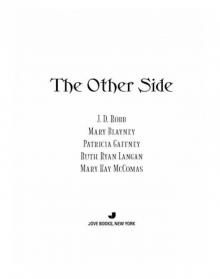 The Other Side
The Other Side The In Death Collection 06-10
The In Death Collection 06-10![[In Death 08] - Conspiracy in Death Read online](http://i1.bookreadfree.com/i2/04/05/in_death_08_-_conspiracy_in_death_preview.jpg) [In Death 08] - Conspiracy in Death
[In Death 08] - Conspiracy in Death The In Death Collection, Books 21-25
The In Death Collection, Books 21-25 Memory in Death edahr-25
Memory in Death edahr-25 The In Death Collection, Books 30-32
The In Death Collection, Books 30-32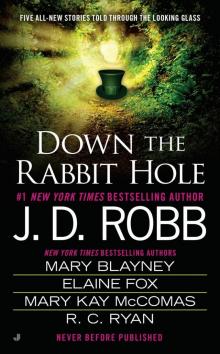 Down the Rabbit Hole
Down the Rabbit Hole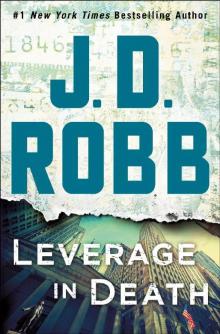 Leverage in Death: An Eve Dallas Novel (In Death, Book 47)
Leverage in Death: An Eve Dallas Novel (In Death, Book 47) The In Death Collection, Books 6-10
The In Death Collection, Books 6-10 The In Death Collection, Books 11-15
The In Death Collection, Books 11-15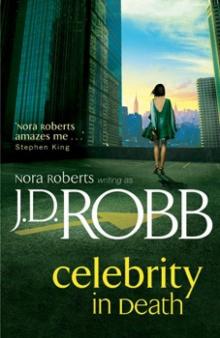 Celebrity in Death edahr-43
Celebrity in Death edahr-43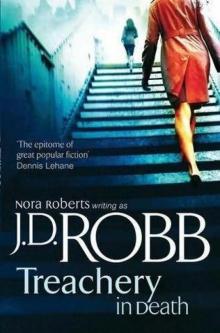 Treachery in Death edahr-40
Treachery in Death edahr-40![[In Death 12] - Betrayal in Death Read online](http://i1.bookreadfree.com/i2/04/13/in_death_12_-_betrayal_in_death_preview.jpg) [In Death 12] - Betrayal in Death
[In Death 12] - Betrayal in Death The In Death Collection, Books 1-5
The In Death Collection, Books 1-5